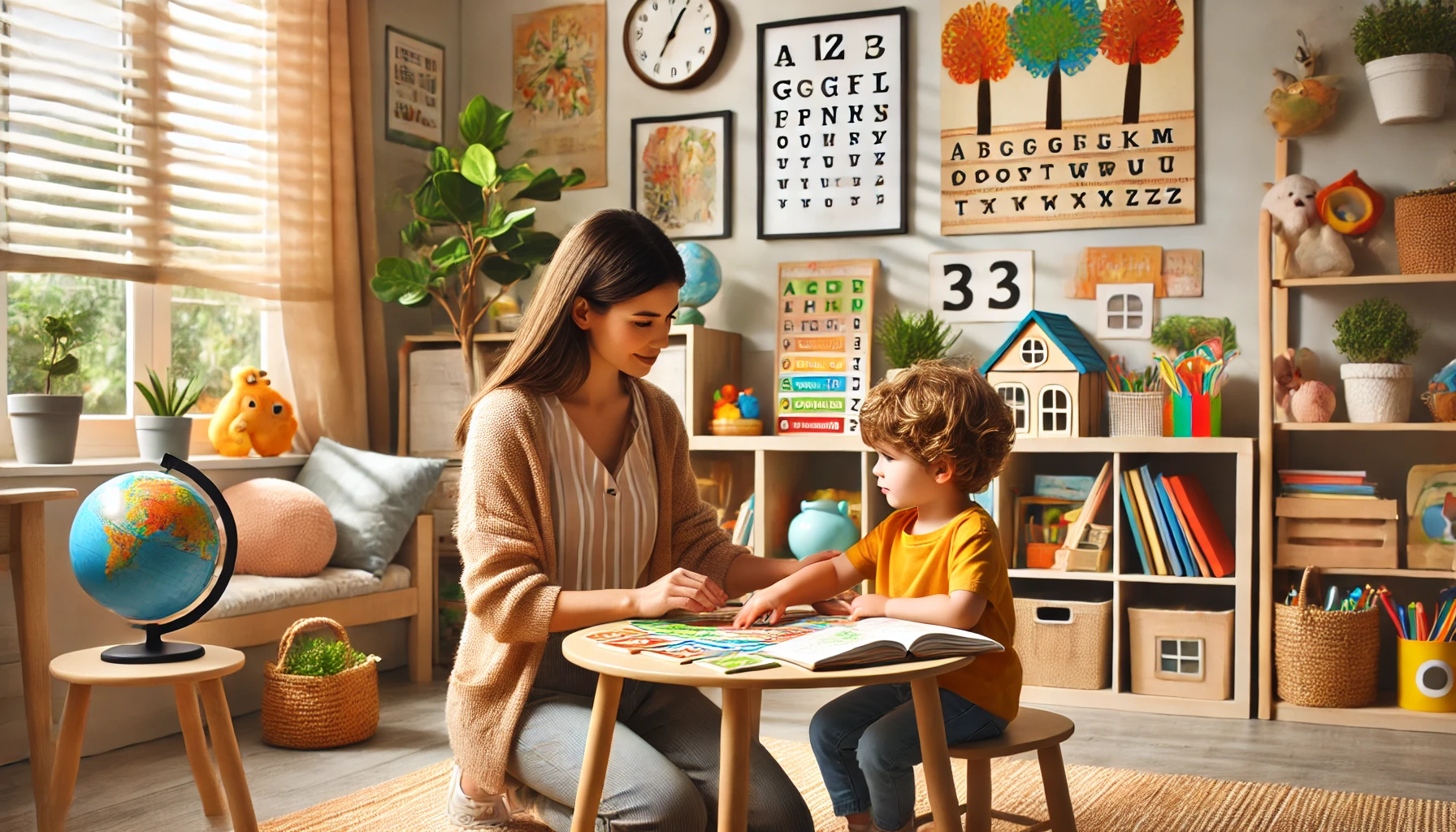Early childhood education (ECE) plays a vital role in a child’s overall development. It encompasses the period from birth to around age five, during which children undergo rapid cognitive, emotional, and social growth. While formal schooling usually starts later, the foundation for learning begins at home. Parents and caregivers can use simple yet effective strategies to provide a stimulating educational environment.
In this article, we’ll explore the principles of early childhood education, its benefits, and practical ways to apply it at home.
What Is Early Childhood Education?
Early childhood education refers to the structured and unstructured learning experiences that help children develop essential skills before they enter formal schooling. It involves play-based activities, social interactions, and foundational learning in areas such as language, motor skills, and problem-solving.
Key Areas of Early Childhood Education
- Cognitive Development: Encouraging problem-solving, memory, and creativity.
- Language and Communication: Building vocabulary, listening skills, and comprehension.
- Motor Skills: Enhancing fine and gross motor abilities through movement and hands-on activities.
- Social and Emotional Learning: Teaching empathy, self-regulation, and cooperation.
- Early Literacy and Numeracy: Introducing basic reading, writing, and math concepts.
The Benefits of Early Childhood Education
Investing time in early education at home offers lifelong benefits. Some key advantages include:
- Improved Academic Readiness: Children who engage in early learning activities tend to perform better in school.
- Stronger Language and Communication Skills: Exposure to conversations, books, and storytelling enhances vocabulary and comprehension.
- Better Social Skills: Interacting with caregivers and peers helps children develop cooperation and empathy.
- Increased Independence and Confidence: Encouraging problem-solving and decision-making builds self-reliance.
- Stronger Parent-Child Bonding: Engaging in learning activities strengthens the emotional connection between parents and children.
How to Apply Early Childhood Education at Home
Creating a learning-friendly home environment doesn’t require expensive tools or formal training. Simple daily interactions and play-based activities can make a significant difference.
1. Establish a Daily Routine
Young children thrive on consistency. A structured daily routine provides a sense of security and helps children transition smoothly between activities.
Example Daily Learning Routine:
- Morning: Singing songs, reading books, and discussing the day’s activities.
- Midday: Hands-on learning through play, puzzles, and exploration.
- Afternoon: Creative activities such as arts and crafts, storytelling, or music time.
- Evening: Calm activities like bedtime stories and reflection on the day.
2. Create a Stimulating Learning Environment
A well-organized space can encourage curiosity and engagement.
Tips for Setting Up a Home Learning Area:
✔️ Designate a small area for books, toys, and creative materials.
✔️ Use low shelves to allow children to access materials independently.
✔️ Include a reading nook with comfortable seating and a variety of books.
✔️ Provide a space for hands-on activities like drawing, building, and sensory play.
3. Encourage Play-Based Learning
Play is a child’s natural way of exploring and understanding the world. Incorporate the following play-based learning activities:
- Pretend Play: Role-playing as a doctor, chef, or shopkeeper to build imagination.
- Sensory Play: Using materials like sand, water, or playdough to stimulate touch and creativity.
- Building Blocks and Puzzles: Encouraging spatial awareness and problem-solving.
- Outdoor Play: Running, climbing, and exploring nature to develop motor skills.
4. Introduce Early Literacy and Numeracy
Even before formal schooling, children can develop basic reading and math skills.
Ways to Promote Early Literacy:
✔️ Read aloud daily, using expressive voices and asking questions.
✔️ Point out letters and words in everyday environments (e.g., food packaging, signs).
✔️ Sing nursery rhymes to build phonemic awareness.
Ways to Introduce Early Numeracy:
✔️ Count objects during play and daily tasks.
✔️ Use simple sorting activities with toys, buttons, or household items.
✔️ Teach shapes and patterns through puzzles and drawing exercises.
5. Encourage Social and Emotional Learning
Emotional intelligence is just as important as academic skills. Help children understand and manage emotions through:
✔️ Emotion Charts: Using pictures of faces to express feelings.
✔️ Storytelling: Reading books that focus on emotions and empathy.
✔️ Group Play: Encouraging turn-taking and cooperation with siblings or friends.
✔️ Mindfulness Activities: Simple breathing exercises or quiet time to promote self-regulation.
6. Use Music and Movement for Learning
Children learn best when they are physically engaged. Incorporate music and movement into learning activities:
- Dance and Freeze Game: Encourages listening and coordination.
- Musical Storytelling: Use instruments or clapping to enhance storytelling.
- Action Songs: Songs with hand movements and dance steps help reinforce language.
7. Ask Open-Ended Questions
Encouraging critical thinking starts with asking the right questions. Instead of giving direct answers, ask:
- “What do you think will happen next?” (during a story)
- “How can we solve this problem?” (during a puzzle or game)
- “Why do you think that happened?” (after observing something new)
This approach helps develop reasoning, creativity, and curiosity.
Overcoming Common Challenges in Home Learning
Even with the best plans, parents may face obstacles. Here’s how to handle common challenges:
✔ Lack of Time: Incorporate learning into daily routines (e.g., counting during grocery shopping).
✔ Short Attention Span: Keep activities short and engaging, gradually increasing focus over time.
✔ Limited Space or Resources: Use household items creatively; learning doesn’t require expensive tools.
✔ Resistance to Learning Activities: Offer choices and follow your child’s interests to make learning enjoyable.
Final Thoughts: Making Early Education at Home Fun and Effective
Early childhood education is more than just preparing for school—it’s about building curiosity, confidence, and a love for learning. By creating a structured yet flexible home environment, parents can provide meaningful learning experiences that shape their child’s future.
Key Takeaways:
✔ Encourage learning through play and exploration.
✔ Use a daily routine to create stability and consistency.
✔ Promote early literacy and numeracy through simple activities.
✔ Support social and emotional learning by discussing feelings and interactions.
✔ Make learning interactive, engaging, and fun!
